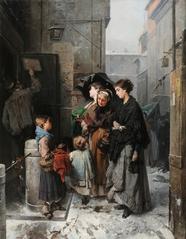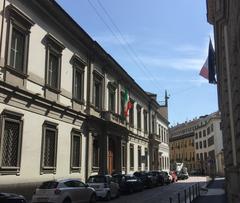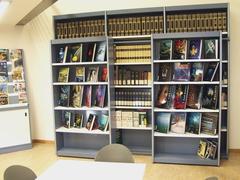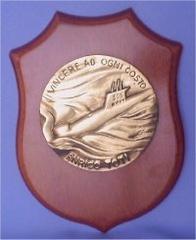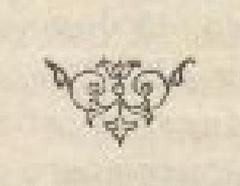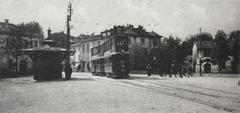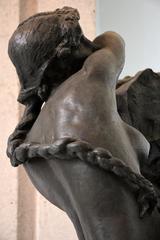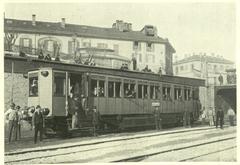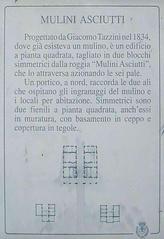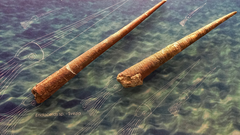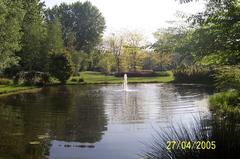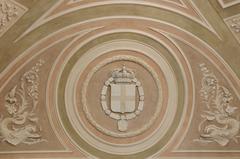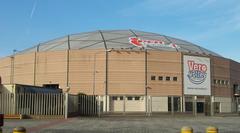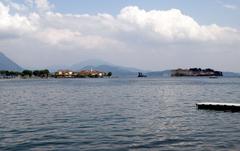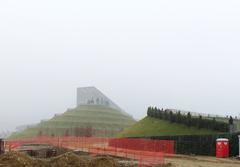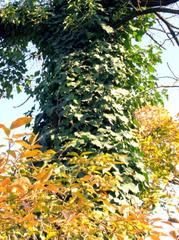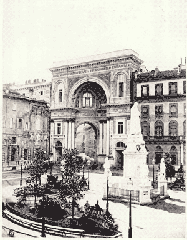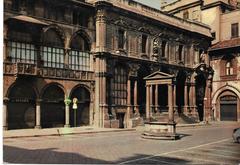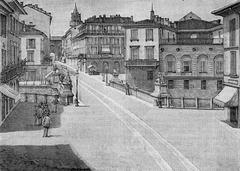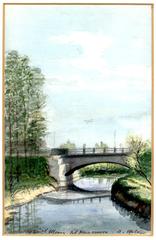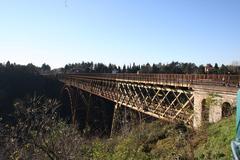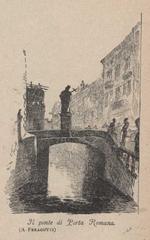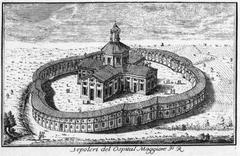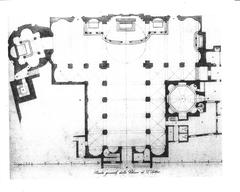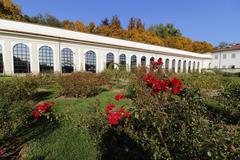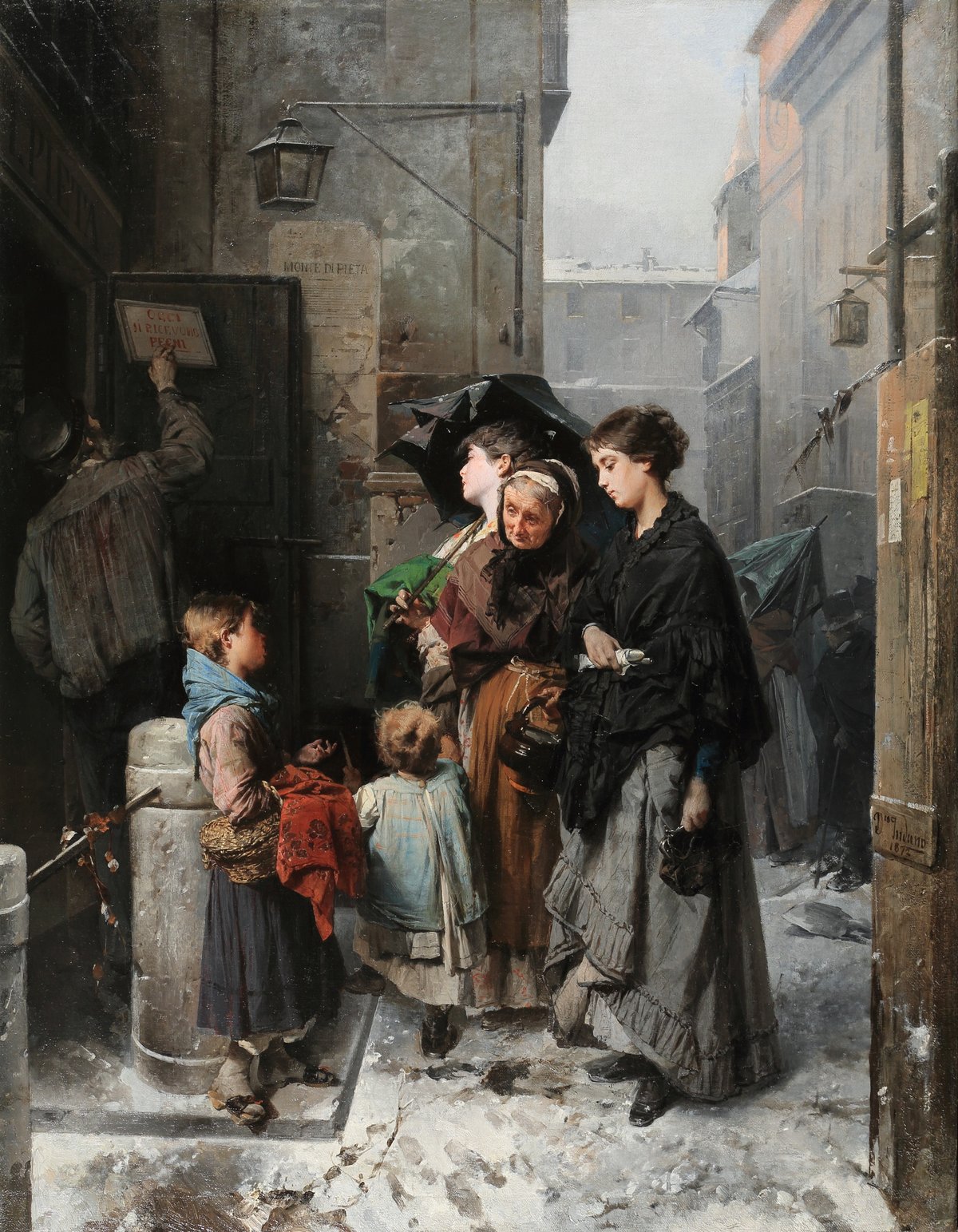
Visiting Fontana dei Tritoni in Monza: Hours, Tickets, and Tips
Date: 01/08/2024
Introduction
The Fontana dei Tritoni, nestled in the heart of Monza, Italy, is an exquisite example of Baroque art and architecture. Constructed in 1715 CE, this fountain stands as a testament to the artistic and cultural flourishes of the early 18th century. Commissioned by Pope Clement XI Albani and designed by the renowned architect Carlo Francesco Bizzaccheri, the Fontana dei Tritoni features sculptures by Francesco Moratti and Filippo Bai (Madain Project). Located within the expansive Parco di Monza, one of Europe’s largest walled parks, this historical gem not only showcases the grandeur of Baroque design but also serves as a cultural and social landmark for Monza’s residents and visitors alike.
The fountain is constructed from travertine, a limestone that has been a staple in Roman architecture for centuries. Its octagonal basin, supported by 16 small columns, and the central figures of Tritons holding an oyster shell, reflect the heraldic symbols of the Albani family and the artistic themes of fertility and abundance prevalent during that era (Turismo Roma). Over the years, the Fontana dei Tritoni has evolved from a practical water source to a cherished cultural icon, drawing tourists and art enthusiasts from around the world. This comprehensive guide will delve into the fountain’s historical context, architectural significance, cultural impact, and provide practical information for visitors, ensuring a memorable experience at this remarkable site.
Table of Contents
- Introduction
- Historical Context
- Architectural Significance
- Cultural and Social Impact
- Artistic Contributions
- Symbolism and Iconography
- Modern-Day Relevance
- Visitor Experience
- Frequently Asked Questions (FAQ)
- Conclusion
Historical Context
The Fontana dei Tritoni, constructed in 1715 CE, is a remarkable example of Baroque art and architecture. Commissioned by Pope Clement XI Albani, a notable figure in the history of Rome, the fountain was designed and constructed under the supervision of renowned architect Carlo Francesco Bizzaccheri, with sculptures by Francesco Moratti and Filippo Bai (Madain Project).
Architectural Significance
The Fontana dei Tritoni is constructed from travertine, a form of limestone that has been used in Roman architecture for centuries. The fountain sits on a circular step made up of 16 small columns and a grate, adding to its grandeur. The main basin of the fountain is octagonal with concave sides, reflecting the heraldic symbol of the Pope’s family, the Albanis. In the center, two Tritons, sculpted by Francesco Moratti, kneel on their tails and hold up their arms to support a large oyster shell that serves as the upper basin. The coat of arms of Pope Clement XI is prominently displayed between the two Tritons (Madain Project).
Cultural and Social Impact
The Fontana dei Tritoni holds significant cultural and social value for Monza and its residents. During the early 18th century, the area around the fountain was sparsely populated and subject to frequent flooding from the Tiber River. Despite these challenges, the fountain became a central feature of the Piazza Bocca della Verità, in front of the basilica of Santa Maria in Cosmedin. The construction of the fountain was part of a broader effort to renovate the piazza and extend the Acqua Felice water pipes, allowing the fountain to serve both as a monumental structure and a practical source of water for citizens and herds of cattle passing by (Turismo Roma).
Artistic Contributions
The artistic contributions to the Fontana dei Tritoni are noteworthy. Architect Carlo Francesco Bizzaccheri was known for his ability to blend functionality with aesthetic appeal. The sculptures by Francesco Moratti and Filippo Bai add a dynamic and lifelike quality to the fountain, making it a masterpiece of Baroque art. The Tritons, mythical sea creatures, are depicted in a dramatic pose, supporting the large oyster shell that serves as the upper basin. This artistic representation enhances the visual appeal of the fountain and symbolizes the power and majesty of the sea, a common theme in Baroque art (Google Arts & Culture).
Symbolism and Iconography
The Fontana dei Tritoni is rich in symbolism and iconography. The use of Tritons reflects the Baroque fascination with mythology and the natural world. The large oyster shell supported by the Tritons symbolizes fertility and abundance, themes important in the art and culture of the time. The coat of arms of Pope Clement XI, prominently displayed between the Tritons, serves as a reminder of the Pope’s patronage and his desire to leave a lasting legacy in the city. The octagonal basin with concave sides, a heraldic symbol of the Albani family, further emphasizes the connection between the fountain and its patron (Wikipedia).
Modern-Day Relevance
Today, the Fontana dei Tritoni remains a significant landmark in Monza. It attracts tourists and art enthusiasts from around the world who come to admire its architectural beauty and historical significance. The fountain is also a popular spot for locals who often gather around it to relax and enjoy the serene atmosphere of the piazza. Ongoing conservation efforts ensure that the fountain remains in excellent condition, preserving its historical and cultural value for future generations (History Hit).
Visitor Experience
Location and Accessibility
Fontana dei Tritoni is situated within Parco di Monza, one of Europe’s largest walled parks, covering 688 hectares. The fountain is conveniently accessible from various points within the park. To reach Parco di Monza, visitors can utilize the excellent public transportation links between Monza and Milan. Trains run approximately every 12 minutes from Milan to Monza, making it a quick and easy day trip. Once in Monza, local buses and taxis can take you directly to the park’s entrances.
Visiting Hours and Tickets
Parco di Monza is open daily, but the visiting hours for Fontana dei Tritoni can vary. Generally, it’s accessible during daylight hours, from early morning until sunset. There is no admission fee specifically for the fountain, as it is part of the public park. However, if you wish to join a guided tour that includes Fontana dei Tritoni, there might be a fee. Check the park’s official website for the most up-to-date information on visiting hours and tour prices.
Best Time to Visit
The best time to visit Fontana dei Tritoni is during the spring and summer months, from April to September. During this period, the weather is generally pleasant, and the park’s flora is in full bloom, providing a picturesque backdrop for the fountain. Early mornings and late afternoons are ideal for avoiding the midday heat and crowds.
Guided Tours
For a more in-depth understanding of the fountain and its historical context, guided tours are available. These tours often include other significant landmarks within Parco di Monza, such as the Villa Reale and the Autodromo Nazionale Monza. Booking a guided tour can provide valuable insights into the history and significance of Fontana dei Tritoni, enhancing your overall experience.
Photography Tips
Fontana dei Tritoni is a popular spot for photography, thanks to its intricate design and the lush surroundings of Parco di Monza. For the best photos, visit during the golden hours—shortly after sunrise or before sunset—when the lighting is soft and flattering. The fountain’s details are best captured with a camera that has a good zoom lens, allowing you to focus on the intricate sculptures of the Tritons.
Nearby Attractions
While visiting Fontana dei Tritoni, take the opportunity to explore other nearby attractions within Parco di Monza. The Villa Reale, located in the western part of the park, is a must-see. This opulent royal residence features beautifully landscaped gardens and historical interiors that are open to the public through guided tours.
Another notable site is the Autodromo Nazionale Monza, one of the oldest purpose-built racing circuits in the world. Even if you’re not a motorsport enthusiast, the historical significance and the sheer scale of the complex make it worth a visit.
Amenities and Facilities
Parco di Monza is well-equipped with amenities to ensure a comfortable visit. There are several cafes and restaurants within the park where you can enjoy a meal or a refreshing drink. Public restrooms are conveniently located throughout the park, and there are numerous benches and picnic areas where you can relax and take in the scenery. For families with children, the park offers playgrounds and open spaces for kids to run around and play. Additionally, the park’s extensive network of walking and cycling trails makes it easy to explore the area at your own pace.
Safety Tips
While Parco di Monza is generally safe, it’s always wise to take basic precautions. Keep an eye on your belongings, especially in crowded areas. If you’re visiting during the summer, be sure to stay hydrated and wear sunscreen to protect yourself from the sun. The park is well-lit and patrolled, but it’s advisable to stick to the main paths and avoid secluded areas, especially after dark.
Environmental Considerations
As a visitor, it’s important to respect the natural beauty of Parco di Monza and Fontana dei Tritoni. Avoid littering and use the designated trash bins provided throughout the park. If you’re picnicking, make sure to clean up after yourself. The park is home to various wildlife, so be mindful of your surroundings and avoid disturbing the animals.
Accessibility for Disabled Visitors
Parco di Monza is committed to being accessible to all visitors. The main paths are well-maintained and suitable for wheelchairs and strollers. Additionally, there are designated parking spaces for disabled visitors near the park entrances. If you require any specific assistance, it’s a good idea to contact the park administration in advance to ensure your needs are met.
Local Customs and Etiquette
When visiting Fontana dei Tritoni and other attractions in Monza, it’s important to be mindful of local customs and etiquette. Italians are known for their warm hospitality, but it’s always appreciated when visitors show respect for local traditions. Dress modestly, especially when visiting religious sites, and be polite and courteous to fellow visitors and locals.
Language Tips
While many people in Monza speak English, learning a few basic Italian phrases can enhance your experience and help you connect with the locals. Simple greetings like “Buongiorno” (Good morning) and “Grazie” (Thank you) are always appreciated. Carrying a small phrasebook or using a translation app can also be helpful.
Souvenirs and Shopping
Before leaving Monza, consider picking up some local souvenirs to remember your visit. The city offers a variety of shops selling traditional Italian goods, from handmade crafts to gourmet food products. The local markets are also a great place to find unique items and experience the vibrant culture of Monza.
Frequently Asked Questions (FAQ)
What are the visiting hours for Fontana dei Tritoni? The Fontana dei Tritoni is accessible 24/7; however, early morning or late afternoon visits are recommended for the best experience.
How much are tickets for Fontana dei Tritoni? There is no admission fee to visit the Fontana dei Tritoni.
Are there guided tours available? Yes, various guided tours include the Fontana dei Tritoni as part of their itinerary, often combined with nearby historical sites.
What are some good photographic spots near the fountain? The piazza itself offers many excellent vantage points for photography, particularly near the basilica of Santa Maria in Cosmedin and the Temple of Hercules Victor.
Conclusion
In summary, the Fontana dei Tritoni is more than just a historical monument; it is a symbol of Monza’s rich cultural heritage and artistic legacy. This Baroque masterpiece, with its intricate design and profound symbolism, continues to captivate visitors and locals alike. From its historical context, marked by the patronage of Pope Clement XI and the artistic genius of Carlo Francesco Bizzaccheri, to its modern-day relevance as a cherished landmark, the Fontana dei Tritoni offers a unique glimpse into the past and present of Monza (Google Arts & Culture).
Whether you are a history enthusiast, an art lover, or simply looking for a serene spot to relax, the Fontana dei Tritoni and its picturesque surroundings within Parco di Monza provide an unforgettable experience. Ongoing conservation efforts ensure that this historical gem remains in excellent condition for future generations to appreciate. As you plan your visit, consider the practical tips provided in this guide to make the most of your time at this enchanting site. For more insights and updates, download our mobile app Audiala or follow us on social media. Your journey to explore the cultural treasures of Monza awaits.
References
- Madain Project. Forum Boarium. Retrieved from Madain Project
- Turismo Roma. Tritoni Fountain. Retrieved from Turismo Roma
- Google Arts & Culture. From the Great Aqueducts to the Famous Fountains of Rome. Retrieved from Google Arts & Culture
- Wikipedia. Fontana del Tritone, Rome. Retrieved from Wikipedia
- History Hit. Temples of the Forum Boarium. Retrieved from History Hit
